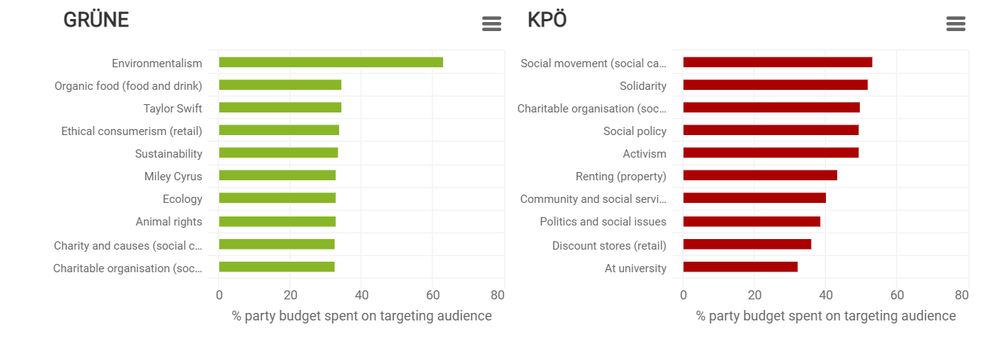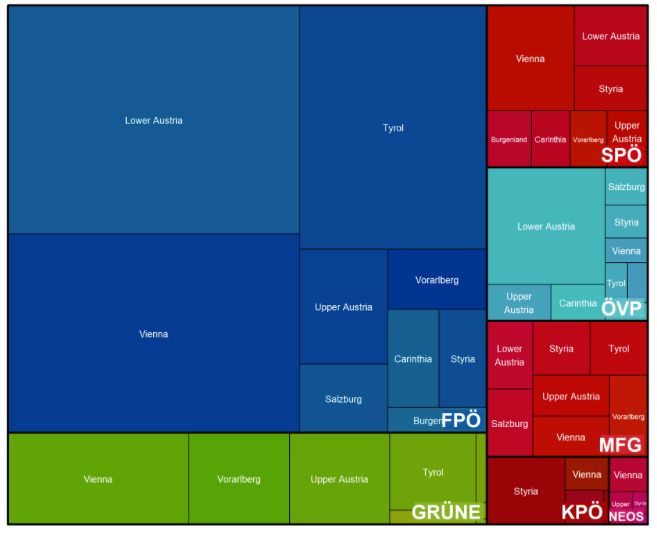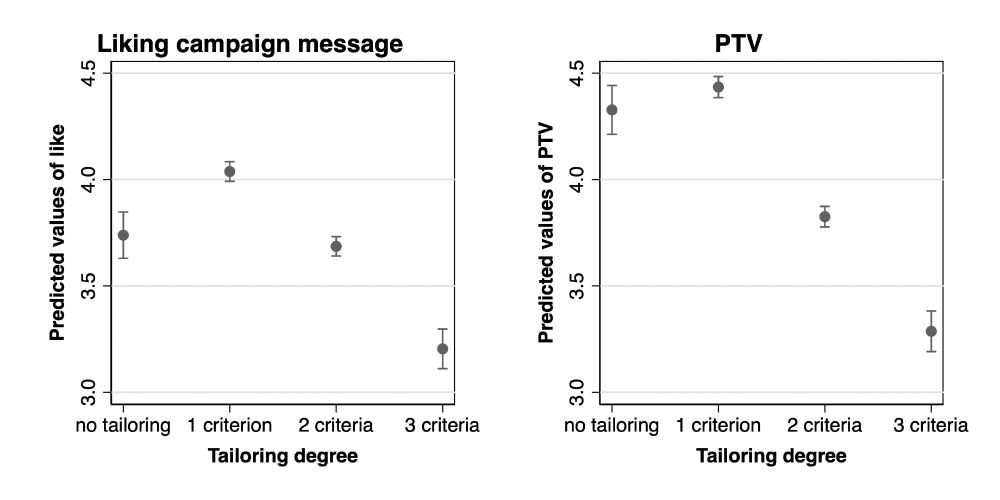Dr in Political Science from Humboldt University of Berlin
Political science, political communication, electoral campaigns, targeting, party competition, public opinion polls
https://christina.gahn.at
Preliminary results suggest that parties mostly use them for mobilization. Looking forward to all feedback! Thanks for inviting me!

Preliminary results suggest that parties mostly use them for mobilization. Looking forward to all feedback! Thanks for inviting me!
@zweitstimme.bsky.social Workshop on Elections, Public Opinion & Elite Behavior at the @hertieschool.bsky.social this week! I'll be presenting first results from a project with @klingelt.bsky.social on the Geography of Electioneering in Multi-Party Systems.

@zweitstimme.bsky.social Workshop on Elections, Public Opinion & Elite Behavior at the @hertieschool.bsky.social this week! I'll be presenting first results from a project with @klingelt.bsky.social on the Geography of Electioneering in Multi-Party Systems.

It’s part of a panel on Political Parties’ Online Communication Strategies in Election Campaigns organized by @zeynsom.bsky.social 👇👀
tinyurl.com/ypujwc5l
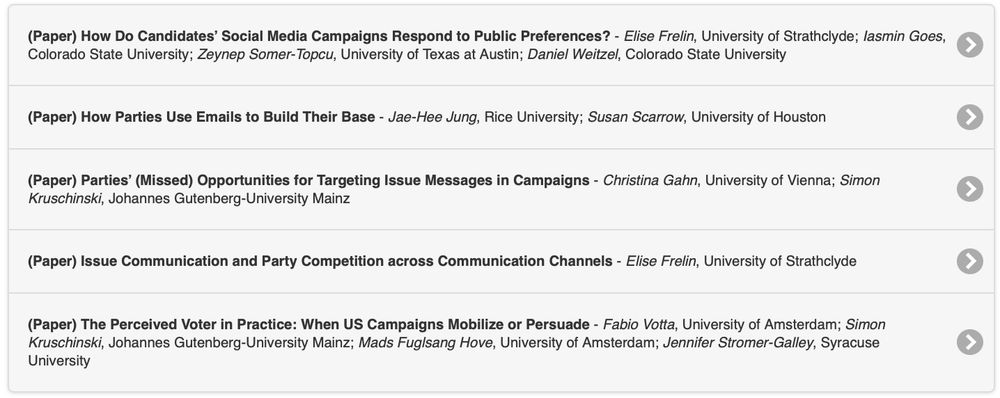
It’s part of a panel on Political Parties’ Online Communication Strategies in Election Campaigns organized by @zeynsom.bsky.social 👇👀
tinyurl.com/ypujwc5l
🕒 Nach 155 Tagen (der längsten in der öst. Geschichte) bildeten ÖVP, SPÖ und NEOS die erste 3-Parteien-Koalition seit 1947.
❌ Die FPÖ, obwohl stärkste Partei, wurde von der Regierung ausgeschlossen.
⚖️ Die neue Koalition fand hohe Zustimmung bei ihren Unterstützer:innen.

🕒 Nach 155 Tagen (der längsten in der öst. Geschichte) bildeten ÖVP, SPÖ und NEOS die erste 3-Parteien-Koalition seit 1947.
❌ Die FPÖ, obwohl stärkste Partei, wurde von der Regierung ausgeschlossen.
⚖️ Die neue Koalition fand hohe Zustimmung bei ihren Unterstützer:innen.
🇦🇹 FPÖ erstmals stärkste Partei (Erholung von Verlusten 2019), ÖVP und Grüne mit starken Verlusten.
💉 Besseres FPÖ-Ergebnis in Regionen mit niedrigen Impfquoten, aber Pandemie spielte nur eine begrenzte Rolle.
🌆 Städtisch-ländliche und demografische Spaltung vertieft.

🇦🇹 FPÖ erstmals stärkste Partei (Erholung von Verlusten 2019), ÖVP und Grüne mit starken Verlusten.
💉 Besseres FPÖ-Ergebnis in Regionen mit niedrigen Impfquoten, aber Pandemie spielte nur eine begrenzte Rolle.
🌆 Städtisch-ländliche und demografische Spaltung vertieft.
😴 Trotz turbulenter Vorgeschichte verlief der Wahlkampf 2024 überraschend unspektakulär.
♻️ Wichtige Themen für Wähler:innen waren Inflation, Migration, Sozialpolitik und Klima.
🌊 Eine schwere Überschwemmung lenkte den Fokus auf Krisenmanagement und verstärkte die Klimadebatte.
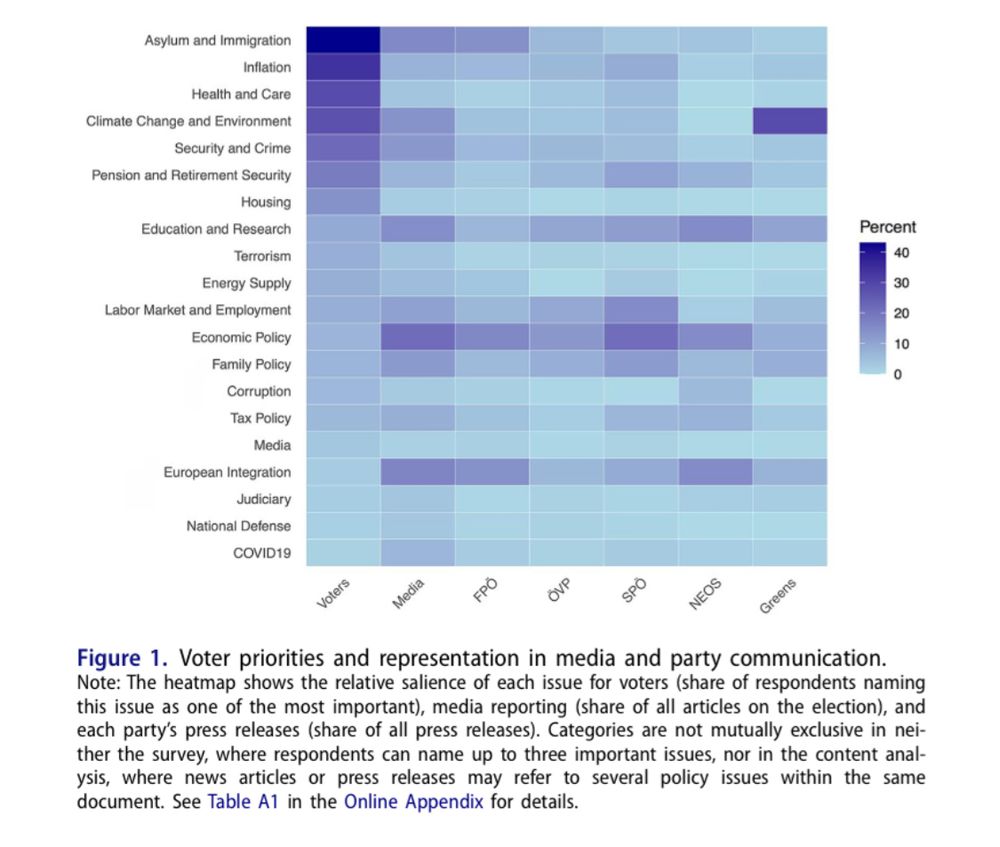
😴 Trotz turbulenter Vorgeschichte verlief der Wahlkampf 2024 überraschend unspektakulär.
♻️ Wichtige Themen für Wähler:innen waren Inflation, Migration, Sozialpolitik und Klima.
🌊 Eine schwere Überschwemmung lenkte den Fokus auf Krisenmanagement und verstärkte die Klimadebatte.
💡 Migration wurde wieder zu einem zentralen Thema für Wähler:innen.
💡 Die FPÖ wurde erstmals stärkste Partei, blieb aber außerhalb der Regierung.
💡 Nach rekordlangen Verhandlungen bildeten ÖVP, SPÖ & NEOS die erste 3-Parteien-Koalition seit 1947.
Mehr Details im Thread 👇🧵

💡 Migration wurde wieder zu einem zentralen Thema für Wähler:innen.
💡 Die FPÖ wurde erstmals stärkste Partei, blieb aber außerhalb der Regierung.
💡 Nach rekordlangen Verhandlungen bildeten ÖVP, SPÖ & NEOS die erste 3-Parteien-Koalition seit 1947.
Mehr Details im Thread 👇🧵
🕒 After 155 days (the longest in Austrian history) ÖVP, SPÖ, and NEOS formed the first 3-party coalition since 1947
❌ FPÖ, despite being the largest party, was excluded from government
⚖️ The resulting coalition achieved high satisfaction among its supporters

🕒 After 155 days (the longest in Austrian history) ÖVP, SPÖ, and NEOS formed the first 3-party coalition since 1947
❌ FPÖ, despite being the largest party, was excluded from government
⚖️ The resulting coalition achieved high satisfaction among its supporters
🇦🇹 FPÖ becoming the largest party for the 1st time (rebound from 2019 losses)
💉 FPÖ performed better in areas with low COVID-19 vaccination rates, but limited role of pandemic
📉 Governing parties ÖVP and Greens suffered heavy losses
🌆 Urban-rural and demographic divides deepened

🇦🇹 FPÖ becoming the largest party for the 1st time (rebound from 2019 losses)
💉 FPÖ performed better in areas with low COVID-19 vaccination rates, but limited role of pandemic
📉 Governing parties ÖVP and Greens suffered heavy losses
🌆 Urban-rural and demographic divides deepened
😴 Despite a turbulent lead-up, the 2024 campaign was surprisingly uneventful
♻️ Key voter issues included inflation, migration, social policies, and climate
🌊 A severe flood shifted focus to crisis management, boosting climate-related discourse

😴 Despite a turbulent lead-up, the 2024 campaign was surprisingly uneventful
♻️ Key voter issues included inflation, migration, social policies, and climate
🌊 A severe flood shifted focus to crisis management, boosting climate-related discourse
💡 Migration re-emerged as a key voter issue.
💡 FPÖ became the largest party for the first time but stayed out of government.
💡 After record-long talks, ÖVP, SPÖ & NEOS formed Austria's first 3-party coalition since WWII.
More detail in thread 👇🧵

💡 Migration re-emerged as a key voter issue.
💡 FPÖ became the largest party for the first time but stayed out of government.
💡 After record-long talks, ÖVP, SPÖ & NEOS formed Austria's first 3-party coalition since WWII.
More detail in thread 👇🧵

1️⃣ Solo-male authorship is declining, with mixed-gender teams now the norm.
2️⃣ All-female authorship plateaued after the mid-2000s.
3️⃣ Gender disparities persist, especially in specific sub-fields.
More details (and plenty of graphs!) in my presentation—swing by! 📊✨
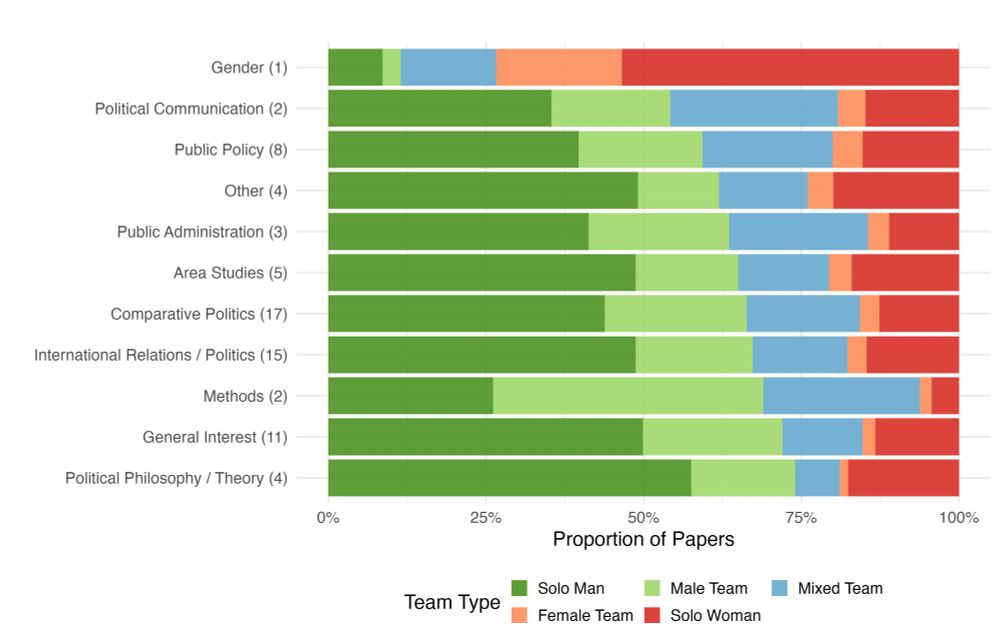
1️⃣ Solo-male authorship is declining, with mixed-gender teams now the norm.
2️⃣ All-female authorship plateaued after the mid-2000s.
3️⃣ Gender disparities persist, especially in specific sub-fields.
More details (and plenty of graphs!) in my presentation—swing by! 📊✨
I’ll present my co-authored research with @michaelimre.bsky.social on 50 years of gender representation in political science publications. We analyze nearly 100,000 articles across 72 journals to uncover long-term trends. 🔍
@epsanet.bsky.social
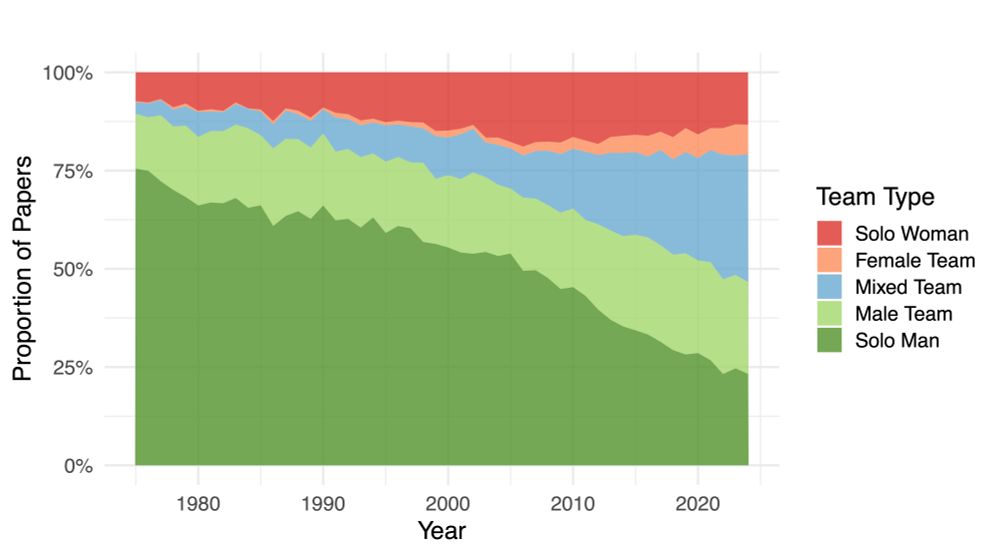
I’ll present my co-authored research with @michaelimre.bsky.social on 50 years of gender representation in political science publications. We analyze nearly 100,000 articles across 72 journals to uncover long-term trends. 🔍
@epsanet.bsky.social

Main Results on Average:
- 35% Dissertation + Training
- 10% Other Research
- 25% Teaching
- 18% Admin + Service
- 10% Feedback/Conferences
🧵
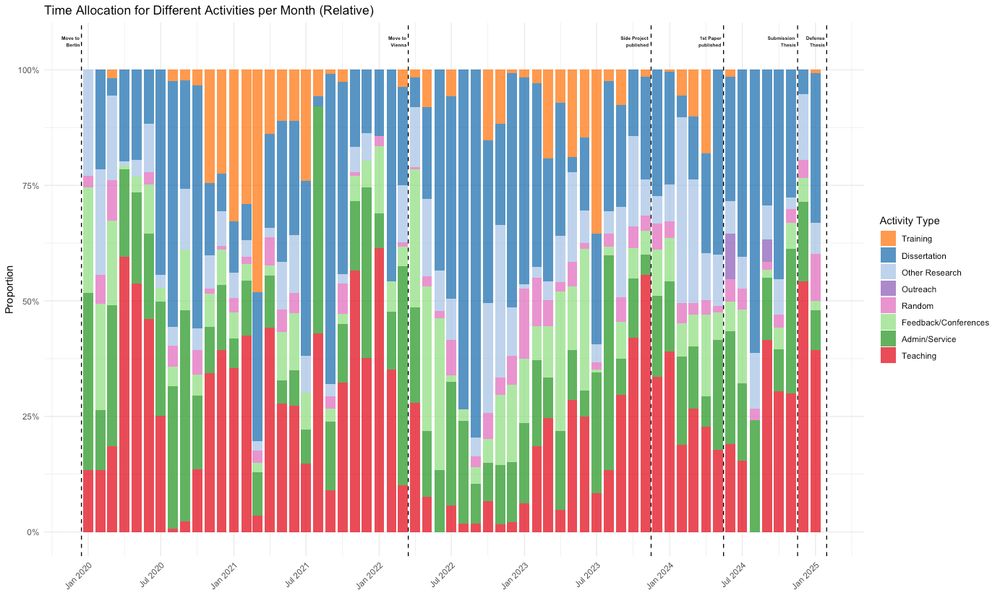
Main Results on Average:
- 35% Dissertation + Training
- 10% Other Research
- 25% Teaching
- 18% Admin + Service
- 10% Feedback/Conferences
🧵




